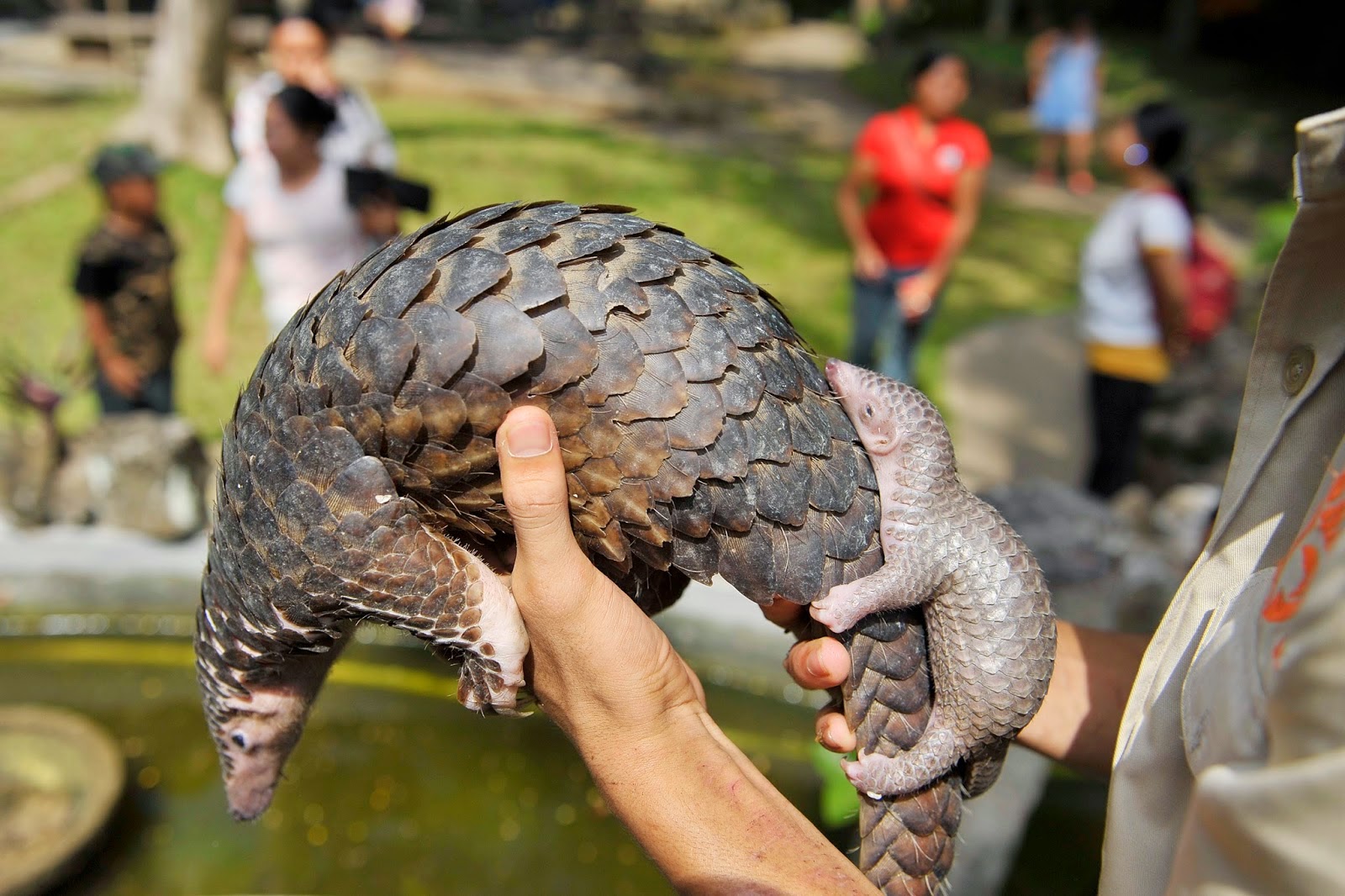Pangolin _ Who are they?
Pangolins
are species of mammal and nurse their young with milk. They are creatures of the night
and very timid, shy, slow, and live alone or in pairs. There are eight species (some
recourses said only seven species) of pangolins in Asia and Africa. Some
of the species of pangolin's are arboreal, which means they live in trees, and
some live in a burrow.
At birth, the young pangolins are pale and its scales become
to strengthen by the next day. The babies with 6 inches longs body and 12 ounces
weights is folded in their mother’s lap or rolled body. After about 4 months of
nursed, the small pangolin can begins to eat young termites (about a month old)
so the infant can go hunt with their mother by (perhaps) riding on their mother’s
tail.
The
adult pangolins have a long body, short legs
and a low, small
pointed head with long tail. Their upper
part, from nose to tail is covered with scales, that scab layer is just form of
clumps of sticky hairs. Pangolin’s cheeks, chest
and belly don’t have scaly, just a little fur-lined hard and its
skin of belly is soft and white. They
are very good at climbing
trees, living and
sleep on trees or burrows. While
sleep or self-defense,
all pangolins are able to roll themselves into a ball; in the
lower part of their tails tip
with a line
fastened to a
flake meat back
to do a curl
very sure and
very hard to open. Pangolins have no teeth so they
use their amazingly long, muscular, and sticky tongues that are perfect for
reaching and lapping up ants, termites and wood destroying insects for meals. Pangolins’ life
span is unknown when they live in the wild; some unofficial reports claimed 12
years up to 20 years.
Today,
deforestation and hunting pangolin are main reasons for large decrease in the
numbers of pangolins around the world.
Source:



Comments
Post a Comment
Let your knowledge, ideas, and innovation be heard. Tell us what you think and know about this topic.